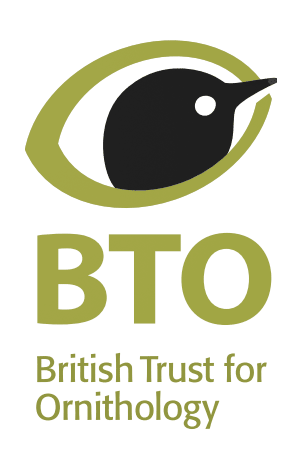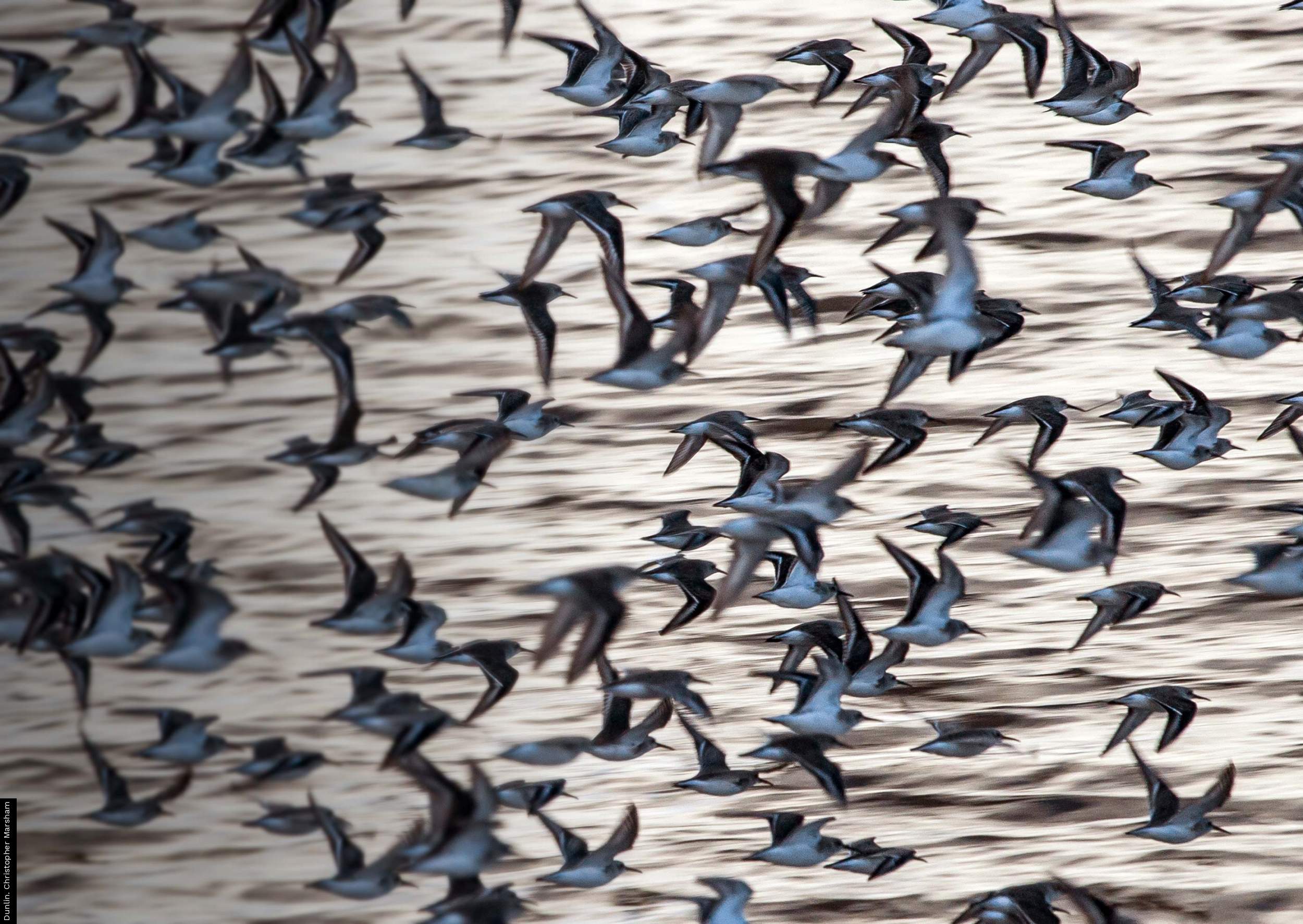Press releases
Scotland’s seabird pirates in peril
September 2024
A new study led by the British Trust for Ornithology in Scotland (BTO Scotland) has unveiled the migration routes and wintering grounds of one of Scotland’s rarest and most endangered seabirds – the Arctic Skua...
Unusual plumage variation in birds not so black and white
August 2024
Familiar garden birds with unusual plumage features, such as a Blackbird or sparrow with striking white feathers, will often catch our eye, and the British Trust for Ornithology (BTO) is asking for help in mapping these scarce occurrences...
If you go down to the woods tonight…
July 2024
One of the UK’s weirdest, and least understood, birds is facing increasing challenges as a result of wetter springs and ongoing insect declines...
Where have our gulls gone?
June 2024
Birdwatchers across the UK are being asked to get out and count gulls this autumn, as the British Trust for Ornithology (BTO) continues to monitor populations of these characterful, if sometimes controversial, birds...
Satellite-tagged Cuckoos clocked crossing continents
June 2024
The instantly recognizable song of the Cuckoo was once a familiar summer sound across much of the UK...
Much-loved songbird threatened by mosquito-borne virus
June 2024
One of the UK’s favourite garden birds, the Blackbird, is in rapid decline, and members of the public are being asked to help scientists find out why...
Breeding Bird Survey celebrates 30 years of citizen science in Northern Ireland
May 2024
Published today, the latest BTO/JNCC/RSPB Breeding Bird Survey (BBS) Report looks at the fortunes of our bird populations in Northern Ireland and across the UK, and celebrates the Pearl Anniversary of a pioneering volunteer-led national study...
Breeding Bird Survey celebrates 30 years of citizen science in Wales
May 2024
Published today, the latest BTO/JNCC/RSPB Breeding Bird Survey (BBS) Report looks at the fortunes of our bird populations in Wales and across the UK, and celebrates the Pearl Anniversary of a pioneering volunteer-led national study...
Breeding Bird Survey celebrates 30 years of citizen science in Scotland
May 2024
Published today, the latest BTO/JNCC/RSPB Breeding Bird Survey (BBS) Report shows continued declines for Scotland’s Swifts, Curlews and Kestrels...
Breeding Bird Survey celebrates 30 years of citizen science
May 2024
Published today, the latest BTO/JNCC/RSPB Breeding Bird Survey (BBS) looks at the fortunes of our bird populations and celebrates the Pearl Anniversary of a pioneering volunteer-led national study...
Ducks take a dive as milder winters keep birds in an unfrozen north
April 2024
Fewer ducks, geese, swans and wader species are travelling to the UK as milder conditions continue to define northern European winters...
Bird and biodiversity benefits of better managed landscapes
April 2024
A new study led by the British Trust for Ornithology (BTO) examines the benefit of well-managed protected areas for declining bird populations...
BTO to launch bird droppings identification app
April 2024
British Trust for Ornithology (BTO) has developed an app that will enable birdwatchers and scientists to delve deeper into species identification by analysing bird droppings...
Will turbines signal an ill wind for Welsh Red Kites?
March 2024
Research undertaken by the British Trust for Ornithology (BTO) predicts that the Red Kite population of Wales is likely to be resilient to the development of future wind farms...
Seabird tracking sheds new light on migration
March 2024
Revealing new research has shown how an endangered seabird is converging on specific stopping off points in the Atlantic Ocean during migration, helping scientists to better understand the bird’s conservation needs...
Shrike a light! BB/BTO Best Bird Book of the Year 2023 announced
March 2024
The British Trust for Ornithology and British Birds are delighted to announce the winner of the award for Best Bird Book of the Year 2023...
Youth In Nature Summit scales new heights in conservation collaboration
February 2024
Hundreds of enthusiastic young people gathered at the David Attenborough Building in Cambridge recently to help shape the future of the UK conservation sector...
Love birds welcome National Nest Box Week
February 2024
As the days start to lengthen and the breeding season approaches, it’s time to think about how we can provide a safe home for our favourite garden visitors...
British gulls contribute to plastic pollution in European wetlands
February 2024
Researchers in Spain have discovered that gulls visiting from Britain are transporting significant amounts of plastic waste from landfill sites to key wetland areas...
Mixed fortunes for UK’s herons and egrets
February 2024
Surveys show colonising egrets and Spoonbills continuing to increase in many parts of the UK, while breeding Grey Herons seem slow in bouncing back following recent declines...
Travel far, breed hard, die young! The surprising lifestyle choices of Short-eared Owls
January 2024
'Travel far, breed hard, die young' – while this might sound like a hedonistic rock-and-roll lifestyle, a new study by researchers at the British Trust for Ornithology (BTO), with collaborators in Iceland and Spain, reveals this is how Short-eared Owls live their lives...
Evidence suggests that protected areas should be extended.
January 2024
A new study, involving BTO and the Wash Wader Research Group, has highlighted the importance of agricultural fields adjacent to The Wash for wintering Curlews...
Declining seabirds on a cliff edge
December 2023
Globally important seabird colonies have suffered catastrophic impacts of avian influenza over the last two years...
Volunteers needed to count winter gulls
December 2023
FOR IMMEDIATE USE The British Trust for Ornithology (BTO) has put today out a call for volunteers, able to identify our common wintering gull species, as part of an important project to understand and conserve these birds, which are of conservation concern because of their declining breeding populations...
Young birders fly high
November 2023
This year's Martin Garner Spurn Young Birders have been been put through their paces, testing their bird identification and general birding skills at the Spurn Migration Festival, and the winners named...
New partnership to make a positive impact for birds
November 2023
The British Trust for Ornithology (BTO) has announced today that it is forging a long-term partnership with family-run Lincolnshire-based bird-care business Vine House Farm...
Avian Flu experts urge beachgoers to report dead birds
July 2023
Thousands of threatened seabirds suspected to have died from Avian Influenza are once again washing up on UK beaches...
Thetford-based national bird charity celebrates big birthday
July 2023
Members and supporters of the British Trust for Ornithology (BTO) came together this weekend to celebrate the leading bird research and monitoring charity’s 90th birthday at its headquarters in Thetford, Norfolk...
Scientists discover why Cuckoos’ clocks can’t adjust to climate change
June 2023
Spring is arriving earlier each year but Cuckoos are unable to shift the timings of their annual migration in response...
New wave of bird flu rips through threatened gull and tern colonies
June 2023
The recent spread of Avian Influenza among threatened gulls and terns is gathering pace, say experts from the British Trust for Ornithology (BTO)...


